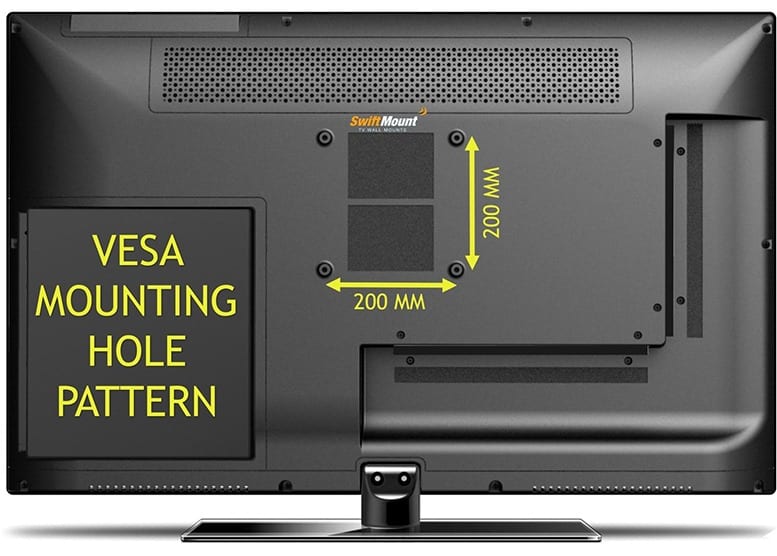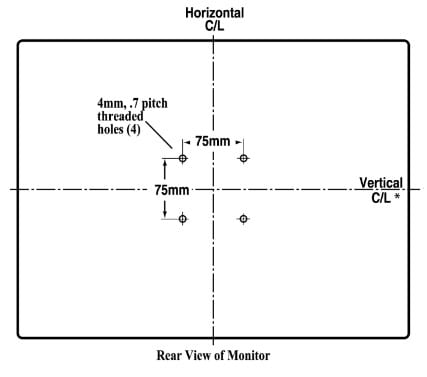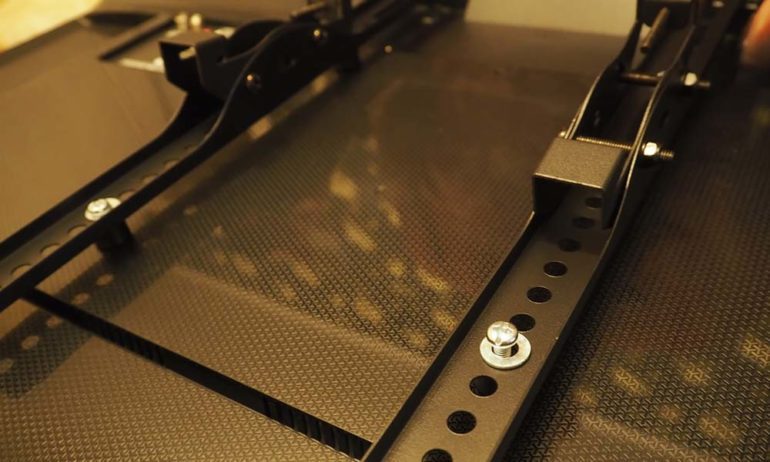Shopping for a flat-screen TV or monitor will lead you to an alphabet soup of technical jargon like OLED, LCD, and HDMI. If you’re looking to get a new mount, it is important to know what VESA is and how to measure your VESA size, so you can get the right mount for your TV or monitor.
What Is VESA?
VESA (Video Electronics Standards Association) standards are measurements for the distance between mounting holes at the back of flat-screen TVs, monitors, and other flat-panel displays. Most TV and mount manufacturers adopt these guidelines to ensure their mounts are compatible with most displays.
The Video Electronics Standards Association is an organization made up of 285 corporate members that develop the standards for the consumer electronics industry. Although they ensure uniformity, following the VESA mounting standards is voluntary for manufacturers. As a result, it is possible that a brand carrying a line of TVs will have some VESA-compliant models and some non-compliant models as well.
Different VESA Classifications

The most common classifications are VESA MIS-D, VESA MIS-E, and VESA MIS-F. Each standard has a different VESA pattern. VESA patterns refer to how the four holes on the back of your display are positioned in relation to each other. Manufacturers indicate these in 100-millimeter increments.
For example, the VESA MIS-D standard means that the mounting hole patterns of the display have a horizontal and vertical distance of 75 or 100 mm. Thus, the hole pattern is written as 75×75 or 100×100 mm. On the other hand, VESA MIS-E can accommodate rectangular displays at 200×100 mm or square displays at 200×200 mm.
For larger TVs, VESA MIS-F has six threaded holes at the back of the display set at 200 mm apart. As a result, varied configurations are possible. For instance, you can set the VESA pattern to a minimum of 400×200 mm or up to 800×400 mm.
In addition, manufacturers also consider the screen size and weight of the display for VESA standards. MIS-D standard mounts, for instance, can carry a maximum weight of 30.8 lbs. On the other hand, MIS-E mounts can hold units weighing at most 50 lbs. and MIS-F mounts can hold up to 250 lbs.
As for screen size, MIS-D mounts work with displays with between 12 and 22.9 inches. These measurements are made diagonally across the screen, from corner to corner. MIS-E mounts work with screen from 23 to 30.9 inches large. In contrast, MIS-F mounts are meant for displays that are 31 inches or larger.
Take note that maximum screen sizes and weights may differ for specific models of mounts. Moreover, the hole pattern and maximum weight mostly determine compatibility between the display unit and the mount. You only consider screen size when there are space issues that affect the installation of the display.
How to Measure Your TV’s VESA Size
To measure your TV VESA size, look for the four threaded holes in the middle of the unit’s backside. Measure the horizontal and vertical distance from the center of the holes. Convert the measurements if needed.
You can also find your TV’s VESA size from the user manual or manufacturer’s website. Follow the steps below to get your TV’s VESA size.
- Unplug your TV from the wall.
- Flip your TV so the screen is facing down.
- Look for four threaded holes at the back. You will find these in the middle of the backside of your TV.
- Measure the horizontal distance. Position your measuring tape in the center of a hole. Drag the tape to the center of an adjacent hole.
- Measure the vertical distance.
- Convert the measurements if necessary. To convert inches to millimeters, just multiply the measurement in inches by 25.4.

Remember that VESA standard measurements are always expressed in horizontal x vertical distance in millimeters. This is true for all types of TV wall mounts, whether they are fixed or ones that you can turn, tilt, or swivel.
Now that you have a better knowledge of VESA, take our short quiz to find which TV mount if right for you.


